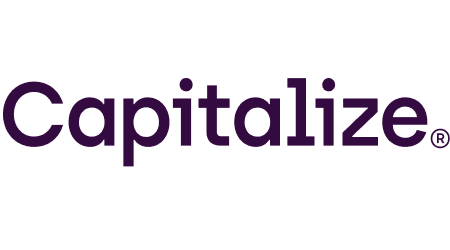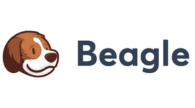
- Free 401(k) search and rollover process
- Find your old 401(k) with Capitalize’s proprietary technology
- Guided rollovers to an IRA of your choice
Through various employer-sponsored and individual retirement plans, individuals can save for their retirement while benefitting from tax breaks and other incentives. From 401(k)s to individual retirement accounts (IRAs) to retirement plans for business owners, we compiled a list of the various retirement accounts to examine where each shines in helping individuals save for life after work.


Retirement plans differ across organizations, so the plan you have available to you depends on your employer. For instance, while the 401(k) may be the most well-known, it’s primarily for employees of for-profit companies. Public schools use a similarly structured plan called 403(b) plans. Meanwhile, state and local government employees have access to 457(b) accounts.
Here’s how the different employer-sponsored retirement plans stack up
| Who it’s for | Eligibility | Advantages | Disadvantages | |
|---|---|---|---|---|
401(k) plans | Employees of for-profit companies | Determined by each employer, but an employee must be allowed to participate if they’re age 21 and have at least one year of service(1) |
Pre-tax
Roth
|
Pre-tax
Roth
|
403(b) plans | Employees of public schools, 501(c)(3) tax-exempt organizations and churches(2) | Be an employee of a public school, church or eligibile tax-exempt organization Employers may exclude employees who work less than 20 hours per week or who participate in another 403(b), 457(b) or 401(k) plan |
|
|
457(b) plans | Employees of state and local governments or a 501(c) tax-exempt organization(3) | Be an employee of a state or local government or of an eligible tax-exempt organization An employer is not required to offer a 457(b) plan to all its employees(4) |
|
|
Thrift Savings Plan | Federal employees and members of the uniformed services | Be a federal employee, a member of the uniformed services or a civilian in certain other categories of government service |
|
|
Cash-balance plan | Employees of for-profit companies as an alternative to defined contribution pension plans | Be at least age 21 and have completed a year of service; however, employers can select less restrictive requirements |
|
|
Nonqualified deferred compensation plans | Corporate executives or highly compensated employees | The employer must write out specifics such as amount to be paid, payment schedule and a life event that will result in payment (example retirement, death, etc.) |
|
|
Defined contribution plans are retirement plans in which the employee, employer or both contribute to the employee’s retirement account. Contributions are invested, and the employee receives a balance that may fluctuate over time based on the contributions and investment gains and losses.
The following are examples of defined contribution plans:
401(k)
A 401(k) is an employer-sponsored plan offered by for-profit companies in which eligible employees contribute a portion of their salary. The account can be structured as either pre-tax or post-tax, but investment options are usually limited to mutual funds. In 2025, you can contribute up to $23,300 to your 401(k). If you’re 50 and older, you can contribute up to an additional $7,500. An employer may or may not offer matching contributions.
403(b)
A 403(b) plan is a similar retirement account to the 401(k) but is offered to employees of public schools, churches and tax-exempt 501(c)(3) tax-exempt organizations. Like a 401(k), you can contribute up to $23,500 in 2025 and an additional $7,500 if you’re 50 and older. Depending on your employer, you may also have access to matching contributions.
457(b)
A 457(b) is a retirement plan like the 401(k) that’s offered to state and local government employees, as well as employees of 501(c) tax-exempt organizations. Like a 401(k) and 403(b), your funds grow tax-deferred until you withdraw your money. 457(b) plans also have a contribution limit of up to $23,500, including any employer contributions.
Thrift Savings Plan
Thrift Savings Plans (TSPs) are retirement plans for federal employees and members of the uniformed services, such as the Army, Navy and the National Oceanic and Atmospheric Administration, among others. The annual contribution limit to a TSP is $23,500, with a catch-up contribution of $7,500 if you’re age 50 and older.
A defined benefit plan is one that promises a specific monthly payment in retirement. The promised benefit may be based on your salary and length of service.
Cash-balance plans
A cash balance plan is a defined benefit plan that defines the promised benefit in terms of a stated account balance.
Nonqualified deferred compensation plans (NQDC)
Nonqualified deferred compensation plans are an agreement between an employee and employer to defer a percentage of the employee’s income until a later date in retirement. These NQDC plans are usually offered to highly compensated employees. These plans may come with their own stipulations, such as limiting employees from offering consulting services in a niche similar to their employer after retiring.
All individuals with earned income can contribute to an IRA in addition to any workplace retirement plans. The following are different types of individual retirement plans.
| Who it’s for | Eligibility | Advantages | Disadvantages | |
|---|---|---|---|---|
Traditional IRAs | Individuals who want to fund retirement savings with tax-deductible contributions and defer paying taxes until retirement | Anyone with earned income No age limit |
|
|
Roth IRAs | Individuals who want tax-free growth and tax-free withdrawals in retirement | Anyone with earned income but with a modified adjusted gross income (MAGI) below a certain amount |
|
|
Spousal IRAs | Married individuals with a spouse who isn’t working | Married couple must file joint tax returns and one must have taxable compensation The total combined contributions can’t be more than the taxable compensation reported on the joint return |
|
|
Rollover IRAs | Individuals switching jobs or retiring | Need an old employer-sponsored plan |
|
|
A traditional IRA is a pre-tax retirement account that allows you to grow funds tax-deferred until you begin taking withdrawals in retirement. For 2025, the maximum you can contribute to an IRA is $7,000. RMDs begin at age 73.
A Roth IRA is a post-tax retirement account that allows you to pay taxes upfront and enjoy tax-free growth and tax-free withdrawals in retirement.
Unlike a traditional IRA, you won’t have to take RMDs with a Roth IRA. However, income limits apply to Roth IRAs. If you’re a single tax filer, you can’t contribute to a Roth IRA if you make more than $165,000 in 2025. If you’re a married couple, you can’t make more than $246,000.
A spousal IRA allows an out-of-work spouse to contribute to an IRA if their spouse has taxable income. Both spouses must file taxes together, and the total combined contributions can’t be more than the taxable compensation reported on the joint return. Spousal IRAs come in both traditional and Roth forms.
A rollover IRA lets you move funds from an old employer-sponsored retirement account to an IRA tax- and penalty-free while preserving the tax-deferred status of your assets. A rollover IRA can be either a traditional or Roth IRA. However, to roll over pre-tax funds to a Roth IRA, you will need to pay taxes on any untaxed amount.
Small business owners or self-employed individuals have the following options when it comes to available retirement plans.
| Who it’s for | Eligibility | Advantages | Disadvantages | |
|---|---|---|---|---|
Solo 401(k) plans | Business owners with no employees | Must have no employees |
|
|
SEP IRAs | Businesses of any size | Be any size business |
|
|
SIMPLE IRAs | Small business owners | Must have fewer than 100 employees |
|
|
A solo 401(k) plan is a traditional 401(k) plan designed for business owners with no employees. The business owner can contribute as both employer and employee. In 2025, you can contribute up to $70,000 to this plan and, if you’re 50 and older, an additional $7,500.
A SEP IRA is available to any business owner regardless of company size and lets employers contribute to a traditional IRA set up for the employee. Business owners may contribute up to 25% of each eligible employee’s income but no more than $70,000 per person for 2025.
A SIMPLE IRA is available to small business owners with 100 or fewer employees and lets employees and employers contribute to traditional IRAs set up for employees. Employers are required to contribute matching a contribution of up to 3% of an employee’s compensation or a 2% nonelective contribution for each eligible employee. For 2025, employees can contribute up to $16,500 to a SIMPLE IRA account or up to $20,000 if they’re aged 50 or older.
Compare providers to kickstart your retirement investing
Find the best retirement account for your unique savings goals.
The best retirement plan for you ultimately depends on your employment situation and what plan is available to you. However, you have full control over your ability to open and fund an IRA. Review the best IRAs and best Roth IRAs to see which provider is right for you.
The best retirement plan is the retirement plan that’s available to you. Every plan has advantages and disadvantages, but the most important thing is to start saving early and regularly.
The $1,000-a-month rule states that for every $1,000 per month you want to withdraw in retirement, you need at least $240,000 saved.
A Roth IRA isn’t necessarily better than a 401(k). The best retirement account depends on your goals and circumstances.
Get up to a 3% IRA match with Robinhood and Acorns or a 1% IRA match with Public. See how to qualify here.
Explore the pros and cons of the best SEP IRAs and learn how to open one of these accounts.
Explore the advantages and shortcomings of the best rollover IRAs for beginners, mobile trading, advanced traders and more.
Compare the key differences in contribution limits, tax advantages and investment options between 403(b)s and Roth IRAs.
Learn about the different types of IRAs and which is right for you.
Check out our picks of the best Roth IRA accounts for beginners, options traders, hands-off investors and more.
Check out our picks of the best IRA accounts for beginners, options traders, hands-off investors and more.
A retirement plan for self-employed individuals but may come with high administrative fees.
Pros and cons to consider before you sign up for a Goldco precious metals IRA.